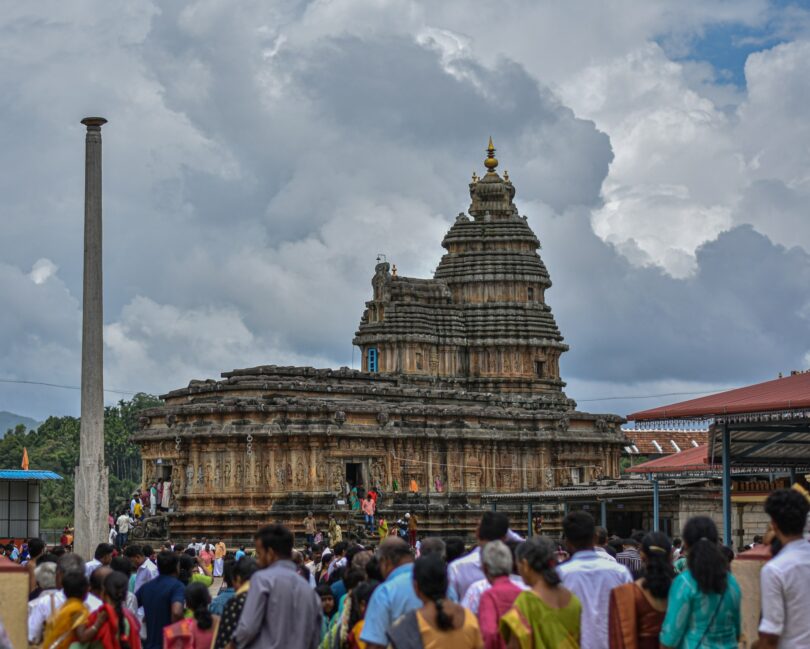Top 10 Famous Temples in India?
India, a land of spirituality and diverse religious beliefs, is home to some of the world’s most magnificent temples. These temples, apart from being places of worship, are architectural marvels that attract millions of devotees and tourists each year. Here is a list of the top 10 famous temples in India, known for their history, religious significance, and architectural splendor.
1. Badrinath Temple, Uttarakhand
History and Significance
Badrinath Temple, dedicated to Lord Vishnu, is one of the four Char Dham pilgrimage sites in India. It is believed to have been established by Adi Shankaracharya in the 8th century. The temple holds immense significance in Hindu mythology and is associated with the legend of Lord Vishnu meditating under the Badri tree.
Architecture
The temple features a traditional Garbhagriha (sanctum sanctorum), a mandapa (hall), and a tall, gold-gilded conical roof. The architecture reflects the North Indian style with vibrant colors and intricate carvings.
2. Kedarnath Temple, Uttarakhand
History and Significance
Situated in the Garhwal Himalayas, Kedarnath Temple is one of the twelve Jyotirlingas of Lord Shiva. The temple is believed to have been built by the Pandavas and later revived by Adi Shankaracharya. It is one of the most revered pilgrimage sites for Hindus.
Architecture
The temple is built using massive stone slabs and has a simplistic yet sturdy design that has withstood natural calamities. The backdrop of snow-covered mountains adds to its divine aura.
3. Kashi Vishwanath Temple, Uttar Pradesh
History and Significance
Located in Varanasi, Kashi Vishwanath Temple is dedicated to Lord Shiva. It is one of the most sacred pilgrimage sites in India and is believed to grant Moksha (liberation) to devotees. The temple has been destroyed and rebuilt several times, with its current structure dating back to the 18th century.
Architecture
The temple features a gold-plated dome and spire, making it a visual spectacle. The intricate carvings and grand entrance gates add to its magnificence.
4. Tirupati Balaji Temple, Andhra Pradesh
History and Significance
Also known as Venkateswara Temple, this temple is dedicated to Lord Venkateswara, an incarnation of Lord Vishnu. It is one of the wealthiest temples in the world and witnesses millions of devotees annually, who offer hair and valuables as a token of devotion.
Architecture
Built in Dravidian style, the temple features grand gopurams (towering gateways) and intricate carvings. The idol of Lord Venkateswara is adorned with gold and precious jewels.
5. Jagannath Temple, Odisha
History and Significance
Located in Puri, Jagannath Temple is one of the Char Dham pilgrimage sites. It is dedicated to Lord Jagannath, an incarnation of Lord Vishnu, along with his siblings Balabhadra and Subhadra. The temple is famous for the annual Rath Yatra festival, where deities are taken out in a grand procession.
Architecture
The temple follows the Kalinga style of architecture, featuring a towering shikhara (spire), intricate stone carvings, and a massive courtyard.
6. Meenakshi Temple, Tamil Nadu
History and Significance
Situated in Madurai, Meenakshi Temple is dedicated to Goddess Meenakshi (Parvati) and Lord Sundareswarar (Shiva). It is one of the oldest and most famous temples in India, known for its vibrant culture and religious significance.
Architecture
The temple showcases exquisite Dravidian architecture with towering gopurams, intricate sculptures, and hallways adorned with murals and paintings. The temple complex is an architectural masterpiece.
Read More: Most Visited Country in the World 2024 list
7. Somnath Temple, Gujarat
History and Significance
Somnath Temple is one of the twelve Jyotirlingas of Lord Shiva and has a history dating back thousands of years. It has been destroyed and rebuilt multiple times, signifying the resilience of faith. The temple is a symbol of India’s rich spiritual heritage.
Architecture
The temple follows the Chalukya style of architecture with a grand shikhara and intricately carved walls. It is strategically located on the Arabian Sea coast, offering breathtaking views.
8. Akshardham Temple, Delhi
History and Significance
Akshardham Temple, dedicated to Bhagwan Swaminarayan, is a modern architectural marvel built in 2005. It represents Hindu culture, spirituality, and history through exhibitions, light shows, and a vast temple complex.
Architecture
The temple is built using pink sandstone and white marble, featuring intricate carvings, magnificent domes, and statues of deities. The central monument is an awe-inspiring structure showcasing Indian craftsmanship.
9. Ramanathaswamy Temple, Tamil Nadu
History and Significance
Located in Rameswaram, Ramanathaswamy Temple is one of the Char Dham pilgrimage sites and is dedicated to Lord Shiva. It is believed that Lord Rama established the Shiva Lingam here before crossing to Lanka to rescue Sita.
Architecture
The temple is famous for its long corridors, intricately carved pillars, and massive temple tanks. The Dravidian-style architecture adds to its grandeur.
10. Golden Temple, Punjab
History and Significance
The Golden Temple, also known as Harmandir Sahib, is the most sacred Sikh shrine located in Amritsar. It was founded by Guru Ram Das and later completed by Guru Arjan Dev. The temple is known for its spiritual ambiance and the langar (community kitchen) that serves free meals to thousands daily.
Architecture
The temple is a stunning structure covered in gold plating, surrounded by a holy water tank (Sarovar). The blend of Hindu and Islamic architectural styles enhances its uniqueness.
Conclusion
Temples in India are more than just places of worship; they are centers of spirituality, history, and culture. Each of these ten temples holds a special place in the hearts of devotees and continues to attract millions of pilgrims and tourists worldwide. Whether for their architectural brilliance or religious significance, these temples stand as timeless symbols of India’s rich heritage and unwavering faith.

